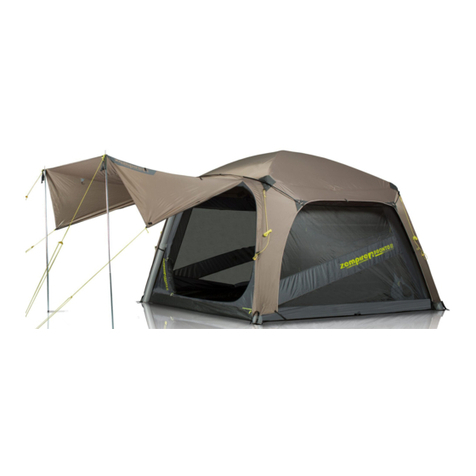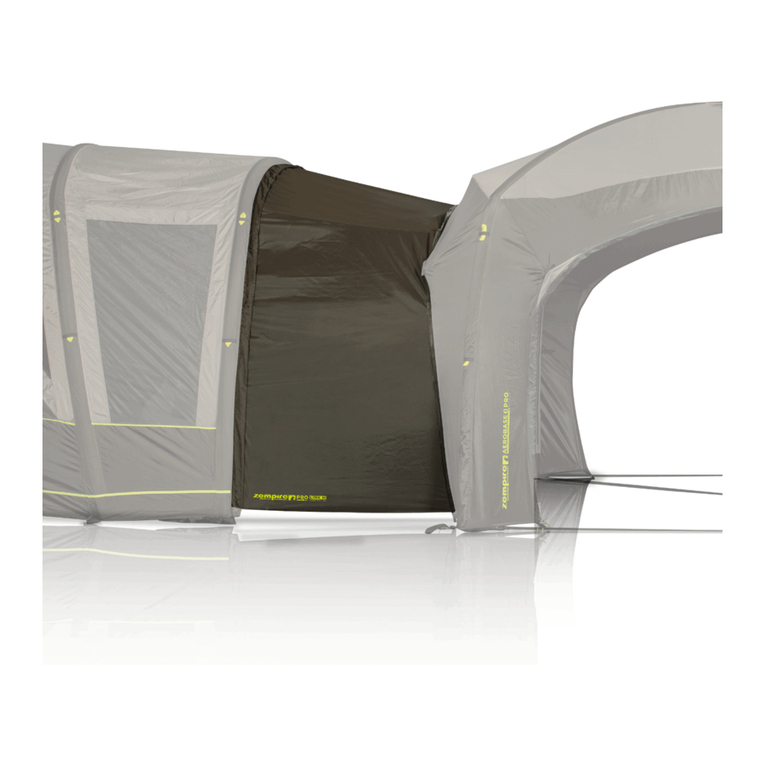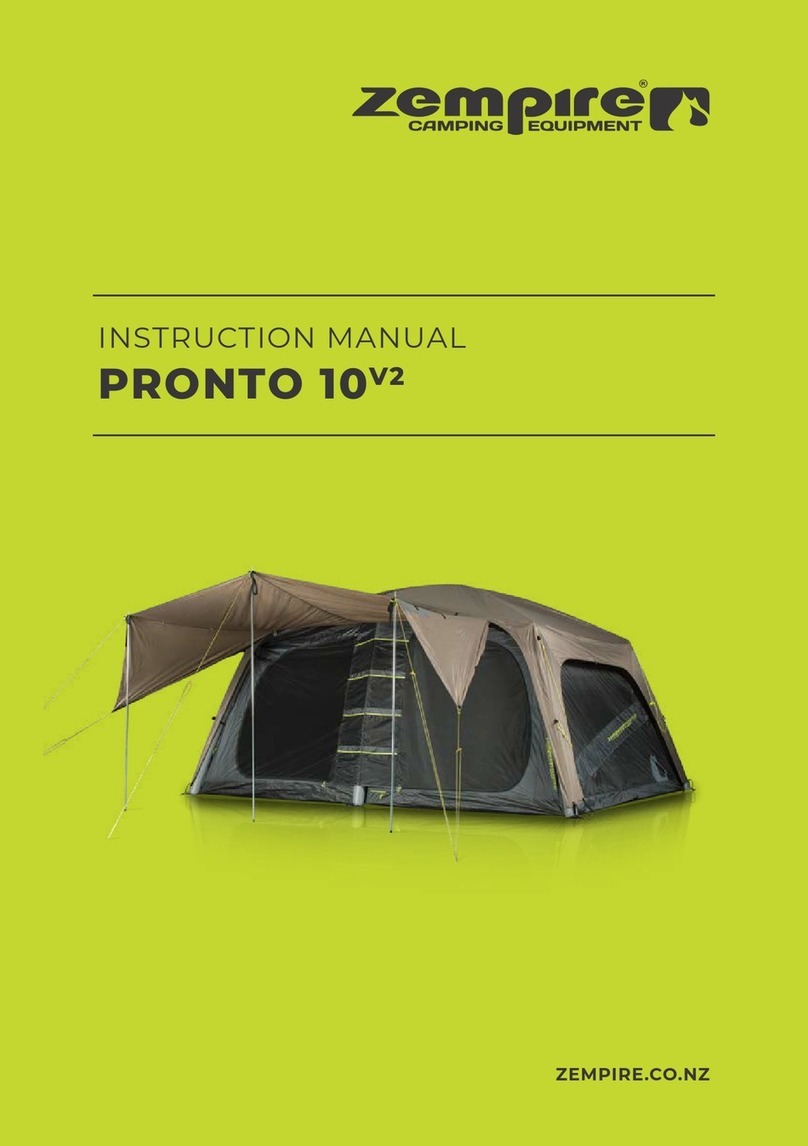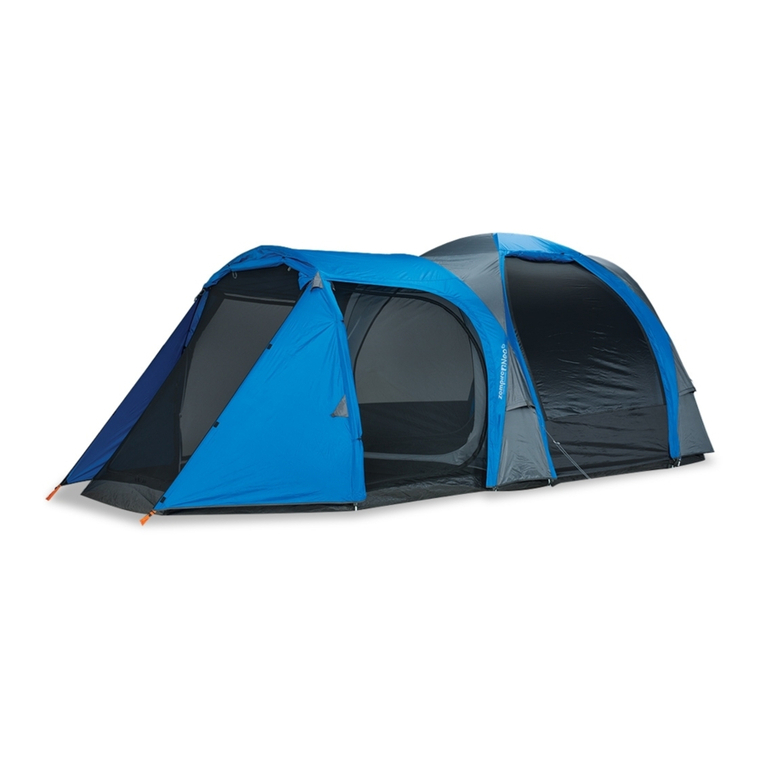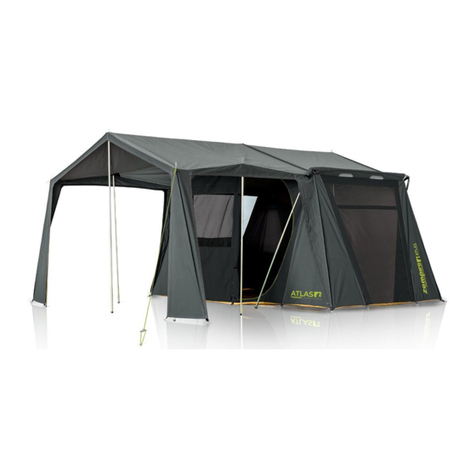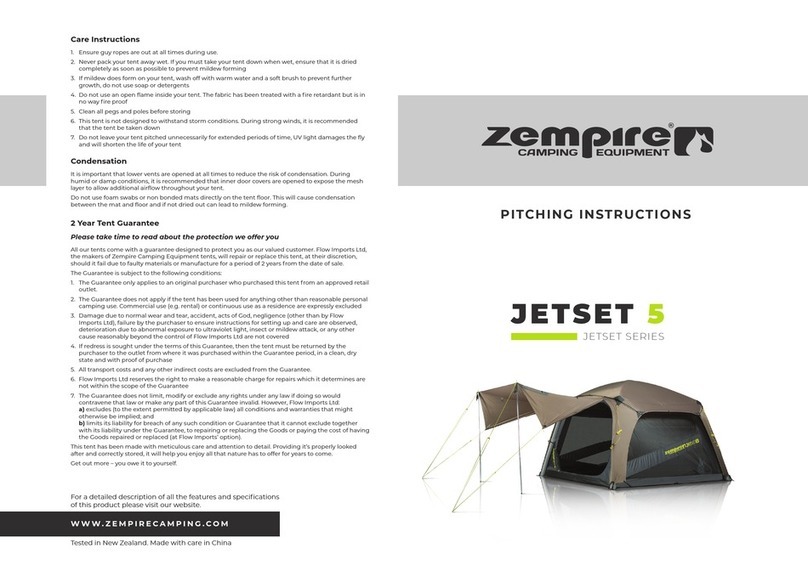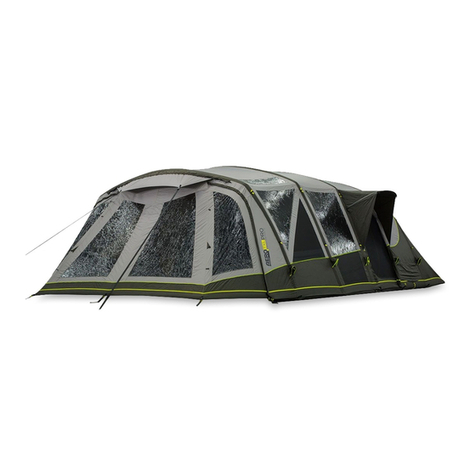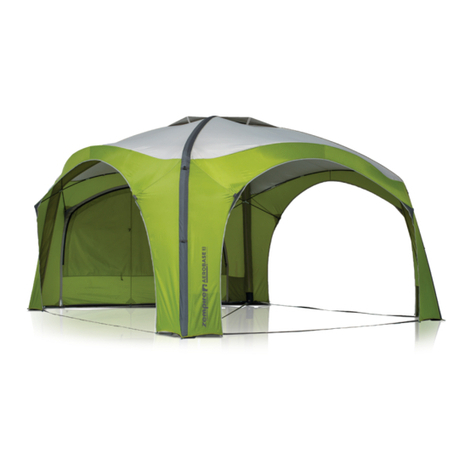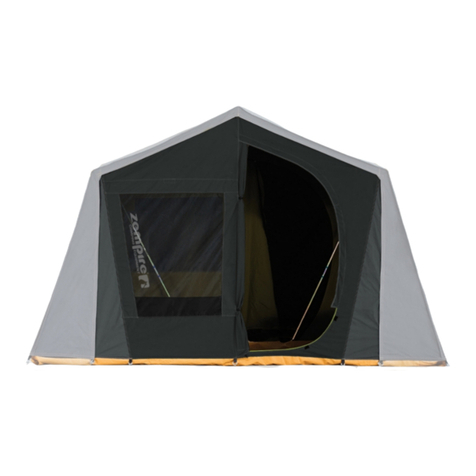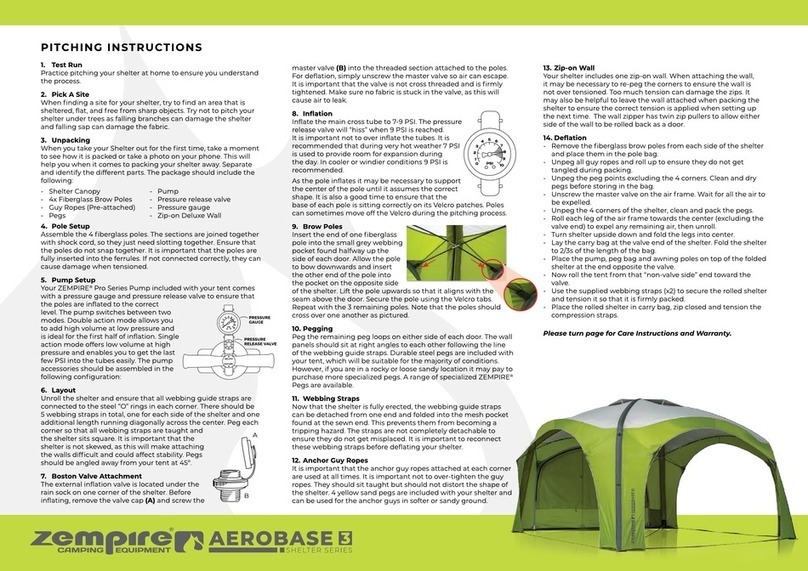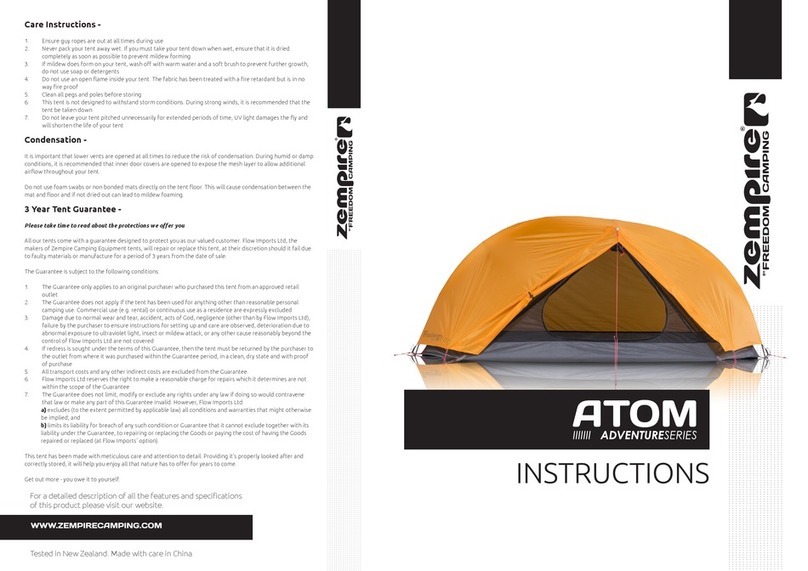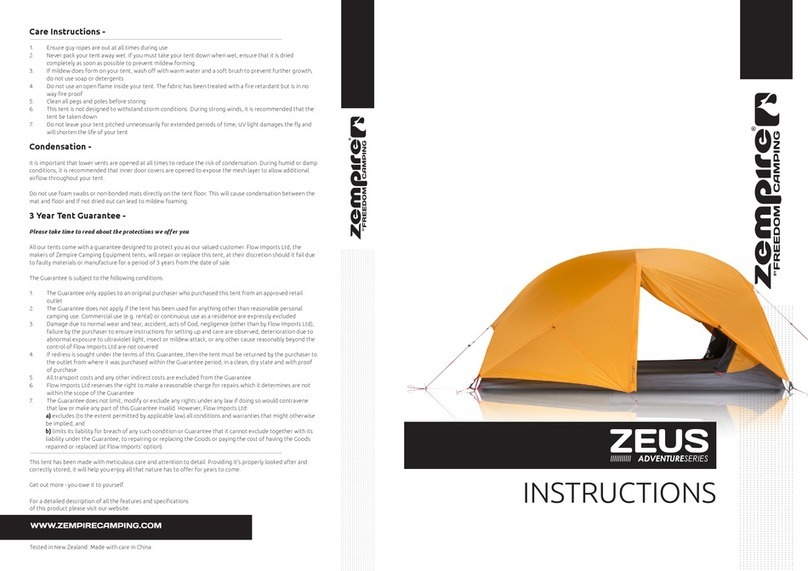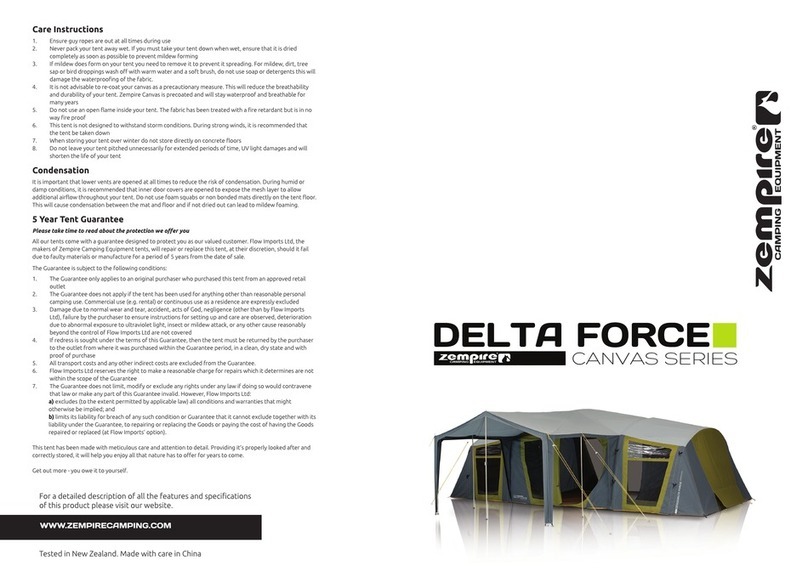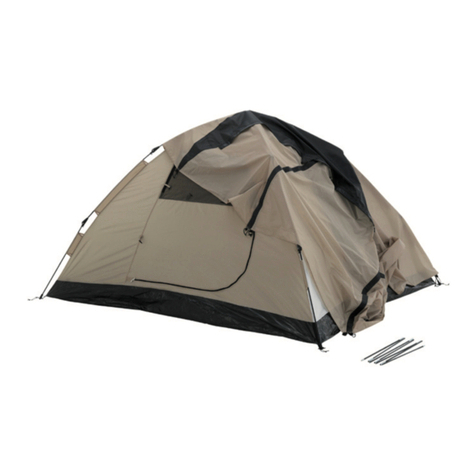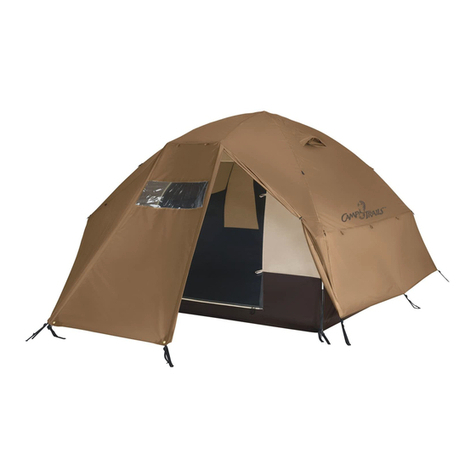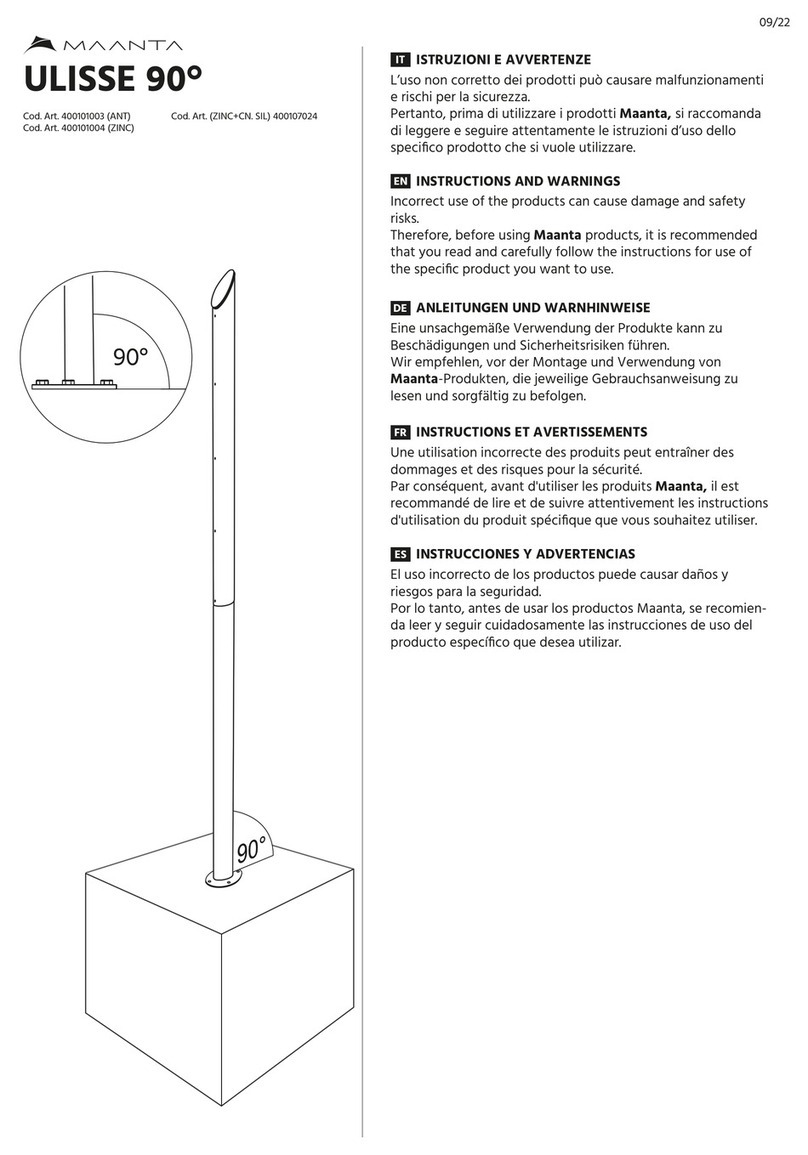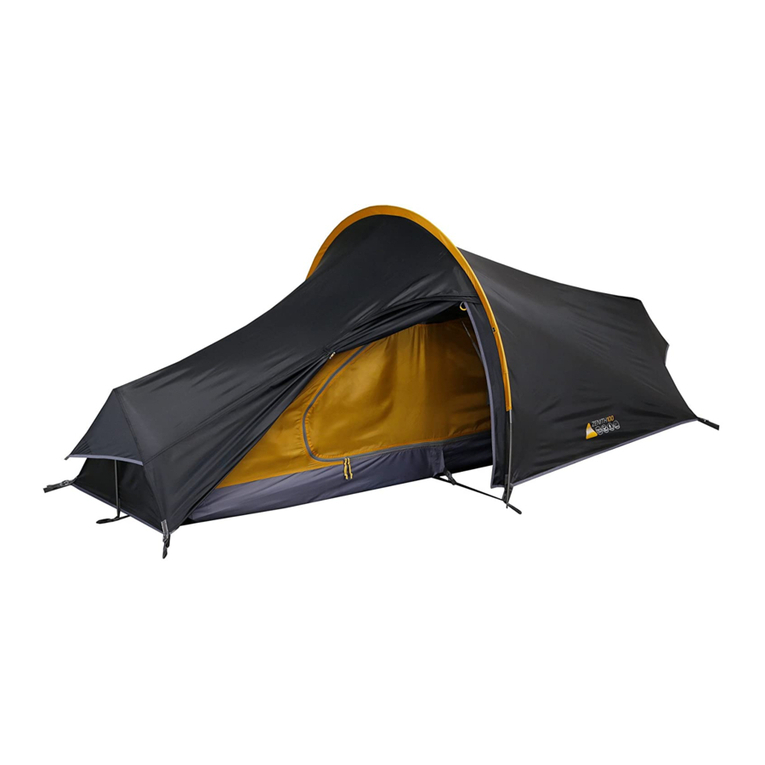
Condensation
It is important that lower vents are opened at all times to reduce the risk of condensation. During humid
or damp conditions, it is recommended that the window covers are opened to expose the mesh layer,
enabling additional airflow throughout your tent.
Do not use foam swabs or non-bonded mats directly on the tent floor. This will cause condensation
between the mat and floor and if not dried out, can lead to mildew forming.
For a detailed description of all the features and specifications please visit our website.
A VALVE CAP
B BOSTON VALVE
C AIRRELEASE
TAPS CLOSED
D ISOLATION
TAPS CLOSED
PRESSURE
RELEASE
VALVE
PRESSURE
GAUGE
HOSE
5. Pump Setup
Your Zempire®High Pressure Pump included with your tent comes with a
pressure gauge and pressure release valve to ensure that the air tubes are
inflated to the correct level. The pump accessories should be assembled in
the configuration shown.
6. Layout
Unroll the tent with the floor facing down. The awning is located at the
front of the tent. Peg out the 4 corners ( ) ensuring there is significant
tension between each point and that the floor sits as flat as possible. Next
peg out the corner of each bedroom ( ) and tension. Peg the front corners
of your awning ( ) so the attached guide straps sit taught and square.
Ideally the pegs should be angled away from your tent at 45º.
7. Airflow
Your tent will arrive with the bottom of the front door open to help
increase airflow during the first pitch. It is important however that the
doors remain predominantly closed during the pitching process to ensure
the tent holds its correct shape during inflation and is not over tightened,
which can cause damage. To enable air to enter during the pitching
process, all window covers should be opened.
8. Boston Valve and Air-Release Taps
The external inflation valve ( ) is located at the rear of the tent. Before
inflating, remove the valve cap (A) and screw the boston valve (B) into the
threaded section attached to the frame. Make sure the 5 air-release taps
C at the rear of the tent, and the 2 taps C on the awning are closed off.
9. Inflation
Connect the pump to the Boston Valve and inflate to 7-9PSI. The pressure-
release valve will “hiss” when 9PSI is reached. It is important not to over-
inflate the tubes. It is recommended that during very hot weather, 7PSI
is used to provide room for expansion during the day. In cooler or windier
conditions, 9PSI is recommended.
As each tube inflates, it may be necessary to support the center of the
tubes until they assume their correct shape.
Once inflated, remove the pump and close all the internal isolation taps
(D). These must be opened again before deflating the tent.
PITCHING INSTRUCTIONS
1. Test Run
Practice pitching your tent at home to ensure you understand the process.
2. Pick A Site
When picking a site for your tent, try to find an area that is sheltered, flat and free from sharp objects. If
possible, position your tent with the front door facing away from the prevailing wind. Also, try not to pitch
your tent under trees as falling branches or sap can damage the tent.
3. Ground Sheet
To protect your tent from dirt and damage, it is recommended to use a Zempire®Ground Sheet. Ground
Sheets not only protect your tent floor but also make pack down faster and cleaner. The Ground Sheet
should be pegged down in the correct position first, then the tent placed on top. Zempire®Ground Sheets
are slightly smaller than the size of the tent floor to ensure water does not collect between the two layers.
4. Unpacking
When you take your tent out for the first time, take a moment to see how it is packed or take a photo with
your phone. This will help you when it comes to packing your tent away. Separate and identify the different
parts included with your tent. The package should include the following:
- Tent - 4 x Crinkle Cut Pegs 11mm
- Pump pressure release valve - 42 x Crinkle Cut Pegs 8mm
- Pressure gauge - Guy Ropes (pre-attached)
- Pump - Additional Guy Ropes
- Repair kit
10. Pegging
Peg the remaining peg loops around the tent. Durable steel pegs are included with your tent which will be
suitable for the majority of conditions. However, when camping at a rocky or loose location, you may wish
to purchase more specialised pegs. A range of specialised Zempire®Pegs may be available in your local
region or on our website.
11. Guy Ropes
Guy ropes are pre-attached on all Zempire®tents. It is recommended that guy ropes are used at all times.
It is important not to over-tighten the guy ropes, they should sit taught but should not distort the shape of
the tent.
12. Deflation
- Open all internal isolation taps.
- Open all window covers and lay them flat on the floor.
- Close all doors, but leave the bottom open.Unpeg all guy ropes and roll up to ensure they do not get
tangled during packing.
- Open all 7 air-release taps and wait for all the air to be expelled. These taps should remain open during
the pack down process.
- Unpeg all peg points.
- Clean and dry pegs before storing in the bag.
- Carefully walk over the air tubes (with shoes removed) towards the air-release taps to expel as much air
as possible.
- Fold the awning over the body of the tent, then fold the bedrooms over the center of the tent.
- Lay the carry bag at the rear of the tent and fold the tent to 2/3s of the length of the bag. The tent
should be folded parallel to the main air tubes.
- Place the pump and peg bags on top of the folded tent at the end opposite the air-release taps. Roll the
tent from the “non-tap” side to the “tap-side” to help expel any remaining air from the frame. It may
take more than one roll to expel all the air from the tent.
- Use the webbing compression straps to secure the rolled tent and place inside the carry bag.
WEATHERING YOUR TENT
When you first get your new tent, you will need to weather it. This is a process of soaking the fabric to
ensure the cotton threads swell up, filling stitch holes and creating a watertight surface.
When you pitch your tent for the first time, soak the fabric with a garden hose until the fabric is visibly
damp. Allow to dry and repeat two or three times.
Your tent will get more watertight the more you use it. Do not be concerned if you have a small amount of
water coming through the seams on the first few times you get heavy rain.
Natural Fibre
Zempire®Canvas is made of a combination of natural cotton for breathability and water fastness and
polyester for strength. Please note that as cotton is a natural fibre, you will notice variances of both colour
and thickness of the thread. This is normal and is a characteristic of a natural and breathable fibre.
Fire Retardant
Zempire®Canvas Tents are naturally fire retardant. While this significantly reduces the risk of the fabric
catching on fire, it is by no means fire-proof. Ensure open flames are kept well away from your tent at all
times.
4 5
